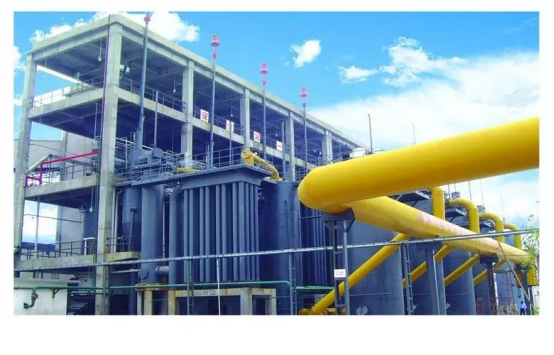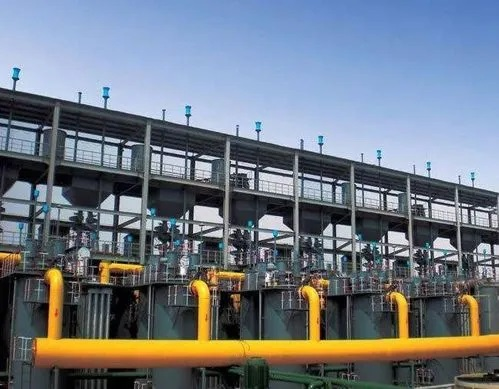Do You Know What Is A Two-stage Gas Furnace
Gas is an important energy that has been used by humans for at least hundreds of years, and many methods have evolved for the use and exploitation of this energy. The two-stage gas generator introduced today is a high-temperature oxidation reaction equipment, which is mainly used for the mixed reaction of gas and air to generate high-temperature combustion gas, which is used for heating and combustion in the thermal production process.
The equipment has the advantages of simple structure, convenient operation, low energy consumption, and environmental protection, so it is widely used in metallurgy, chemical industry, building materials, civil and other fields.
Two-stage gas furnace
Structure and composition
The two-stage coal gasifier is composed of a dry distillation section and a gasification section from top to bottom. First, coal enters the furnace body from the top coal bunker through two sets of lower coal valves. The coal is fully dried and long-term low-temperature dry distillation in the dry distillation section. Gradually form semi-coke and enter the gasification section. The hot semi-coke fully reacts with the gasification agent blown into the furnace bottom in the gasification section, passes through the reduction layer and oxidation layer in the furnace to form ash, and is driven by the grate from the ash basin Automatic discharge.
In the process of low-temperature dry distillation of coal, the gas mainly produced by the precipitation of volatile matter is called dry distillation gas, which constitutes the top gas of the two-stage furnace, accounting for about 40% of the total gas volume, and its calorific value is relatively high (6700KJ/nm3). The temperature is low (around 120°C) and contains a lot of tar. This kind of tar is a product of low-temperature dry distillation, which has good fluidity and can be collected by electrostatic precipitators to be used as chemical raw materials and fuels.
In the gasification section, the hot semi-coke and the vaporizing agent undergo a series of chemical reactions such as reduction and oxidation to generate gas, which is called gasification gas. The gas at the bottom of the two-stage furnace accounts for about 60% of the total gas volume. Its calorific value is relatively low (6400KJ/nm3) and its temperature is high (about 450°C). Because the coal has sufficient time for low-temperature carbonization in the carbonization section, it enters the gas The coal in the gasification section has become semi-coke, so the gasification gas generated does not contain tar, and because it is close to the ash layer of the grate, it contains a small amount of fly ash.
The gas at the bottom can be processed by equipment such as a cyclone dust collector and air cooler, so that users who use cold purified gas can use upper cooled purified gas without water washing, thus avoiding the problem that a large amount of phenolic water cannot be processed.

Process flow
The gas in the upper section enters the electric filter, and its working temperature is between 90-150°C. The tar mist and dust in the gas are polarized, collected on the wall of the pole tube, and flow to the tar tank by itself.
The gas in the lower section passes through the ash hopper, removes large particles of dust, and then enters the cyclone dust collector for centrifugal dust removal. The temperature after dust removal is about 450-550°C. After the gas in the upper section is mixed with the gas in the lower section, it is sent to the heating furnace through the gas pipeline.


